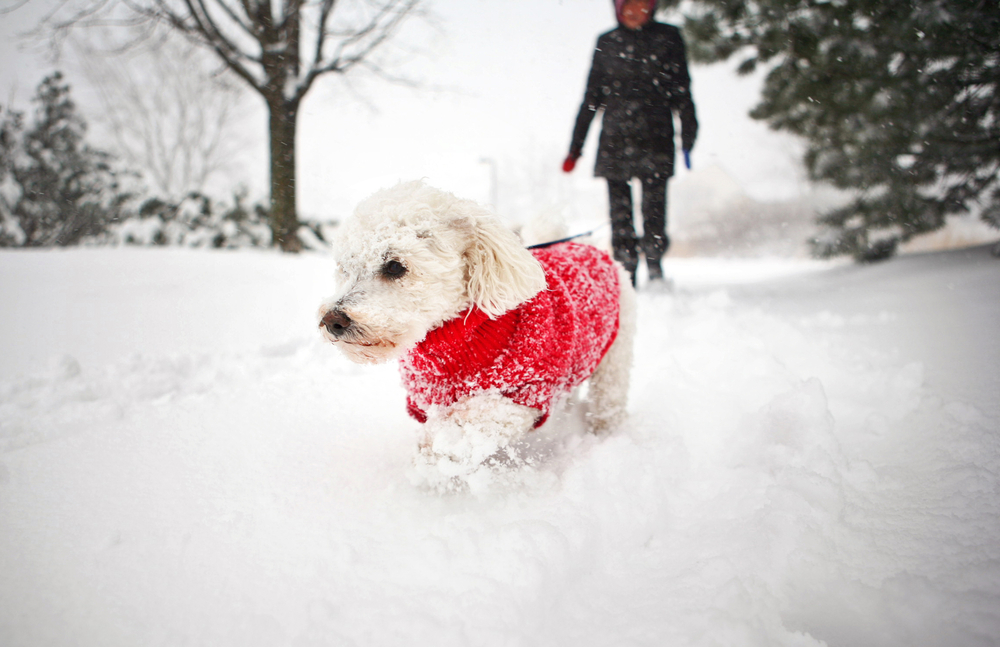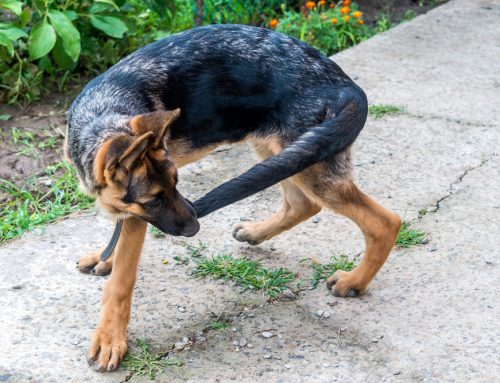Winter can bring extremely cold temperatures, and that can be dangerous for people and pets. As a pet owner, you are responsible for ensuring your pet stays safe and warm throughout the winter, and the first step is understanding the potential hazards. Our team at Fremont Animal Hospital has an easy way to help you remember how to avoid cold weather hazards. Use the mnemonic “cold pet” to keep your pet warm this winter.
C — Cut down on your pet’s outdoor time in cold weather
Some people think all pets are resistant to cold weather because of their fluffy fur, but that is not the case. While longer-haired and thick-coated dog breeds, like huskies, are bred for colder climates, other pets are more susceptible to the dangers of cold weather, such as frostbite or hypothermia. The best way to reduce your pet’s risk is to keep them indoors when the temperature drops.
Of course, you can’t keep your pet indoors all day, and it’s important to bundle them up when heading outside. Pets with short coats and very young or senior pets can benefit from wearing a sweater or jacket when heading outside. Ensure your pet’s jacket fits snugly without restricting their movement or airway.

O — Observe your pet for signs of frostbite or hypothermia
Our pets can’t tell us when they are cold, which is why we need to observe them outside for any signs of discomfort. Subtle behavioral cues, such as whining or shivering, are good indicators that your pet is cold and needs to go inside. You also may notice your pet moving more slowly or looking for a warm place to burrow. Prolonged exposure to the cold puts all pets at risk of frostbite and hypothermia. Although rarely life-threatening, frostbite is often a precursor to hypothermia, which can be fatal in some cases. If your pet has been exposed to frigid temperatures, watch them closely for the following frostbite signs:
- Skin that first appears pale or bluish-white, and later becomes red and puffy
- Red or gray-tinged skin on the ears, tail, or nose
- Skin that appears brittle or shriveled and stays cold to the touch
- Pain in the ears, tail, paws, or nose when touched
- Ice crystals in or around the nose
In addition to observing your pet for signs of frostbite, also monitor their behavior for early indicators of hypothermia, including
- Shivering
- Lethargy
- Stiff muscles
- Pale or gray gums
- Stumbling or lack of coordination
- Fixed and dilated pupils
- Low heart and breathing rates
- Collapse
Hypothermia can be a life-threatening condition for your pet. If you notice any of these signs, bring your pet indoors immediately and contact our team.
L — Love your pet by leaving them at home
Most people know not to leave their pet in the car in hot weather, but cold weather can be equally dangerous. Cars have little insulation and do not protect your pet from frigid temperatures. Pets left outdoors or in a vehicle in cold weather can develop hypothermia quickly. The safest place for your pet is indoors where it’s warm, so love your pet by leaving them home when you’re running errands in the cold weather.
D — Don’t let your pet near frozen bodies of water
When walking your pet, stay away from frozen ponds, lakes, and other water. Surface ice on ponds and lakes can be unpredictable, and a pet who falls through into the frigid water can succumb quickly to hypothermia and drown.
P — Protect your pet’s paws
Cold weather can be hard on your pet’s paws. Snow and ice can lead to frostbite and can dry out their paw pads, leaving their skin chapped or cracked. Rock salt and ice-melt products also can burn and irritate paw pads. To protect your pet’s paw pads, wipe their feet with a damp cloth after they walk on roads or sidewalks to remove any accumulated salt, ice melt, or debris. Protective footwear also can protect your pet’s paw pads if your pet is willing to wear them.
E — Ensure antifreeze stays out of your pet’s reach
Antifreeze, which is used to winterize cars and homes, contains a dangerous ingredient called ethylene glycol that tastes sweet but is highly toxic to pets. Store unused antifreeze in a secure cabinet out of your pet’s reach, be aware of antifreeze spills or leaks from a car’s radiator, and clean up spills quickly to avoid a life-threatening situation for your pet.
T — Take your pet in for annual wellness exams
Protect your pet’s health all year long. Pets should be assessed by a veterinary professional at least once a year. Our four-legged friends are excellent at hiding illness and may not show outward signs until their condition is advanced. During a regular wellness visit, your pet’s veterinarian will perform a thorough physical examination and diagnostic tests to help detect health complications in the early stages when they are easier to treat and manage.
Enjoy the winter with your pet, and remember to use “cold pet” to reduce the risks posed by cold weather. If you have more questions about cold weather pet safety or need to schedule your pet’s wellness exam, contact our Fremont Animal Hospital team.






















Leave A Comment